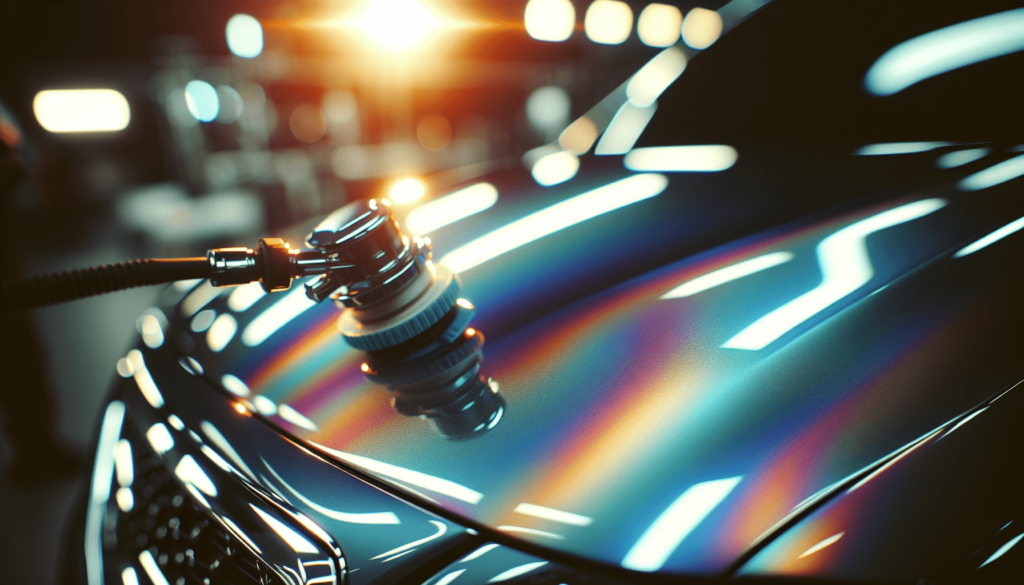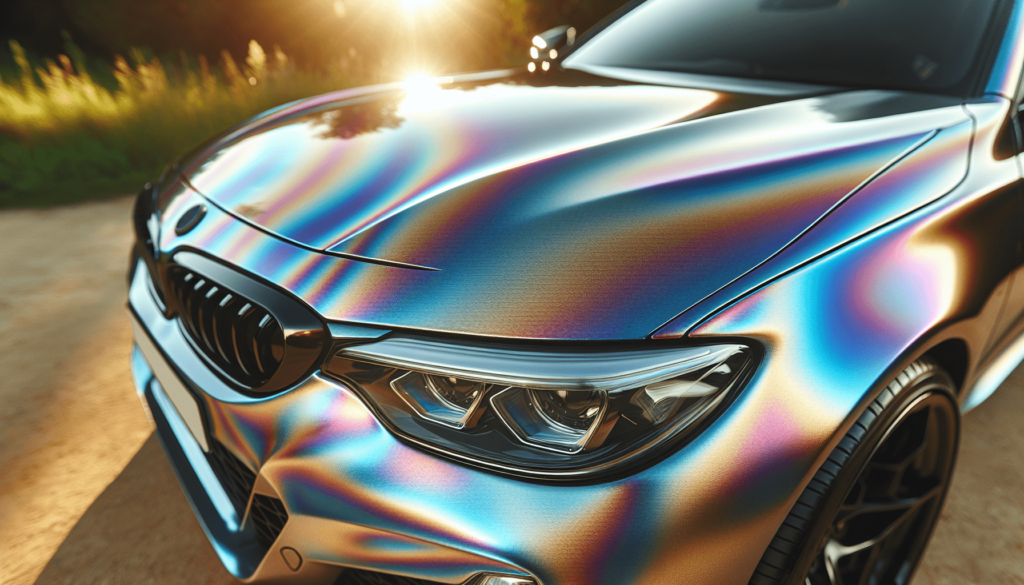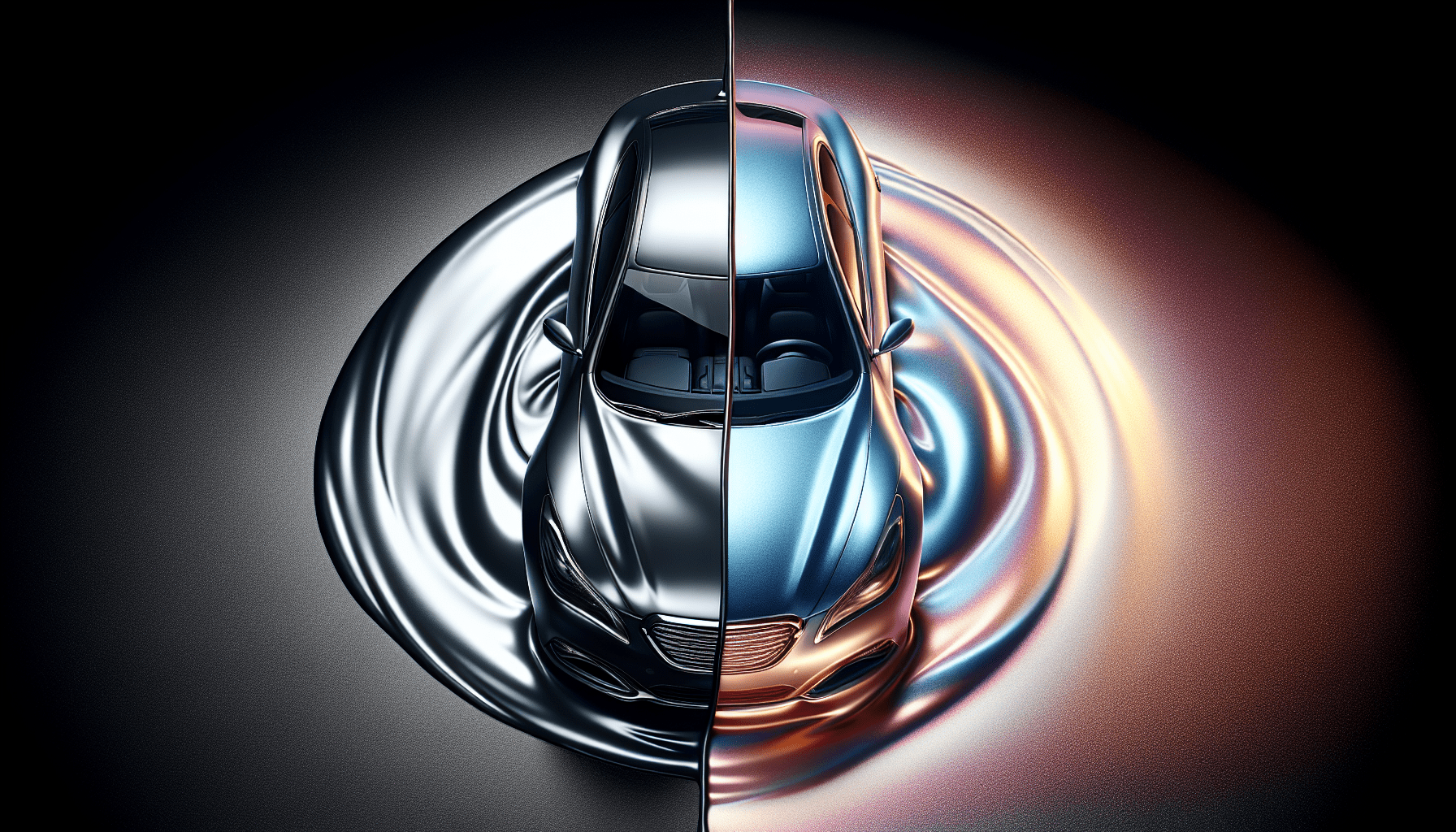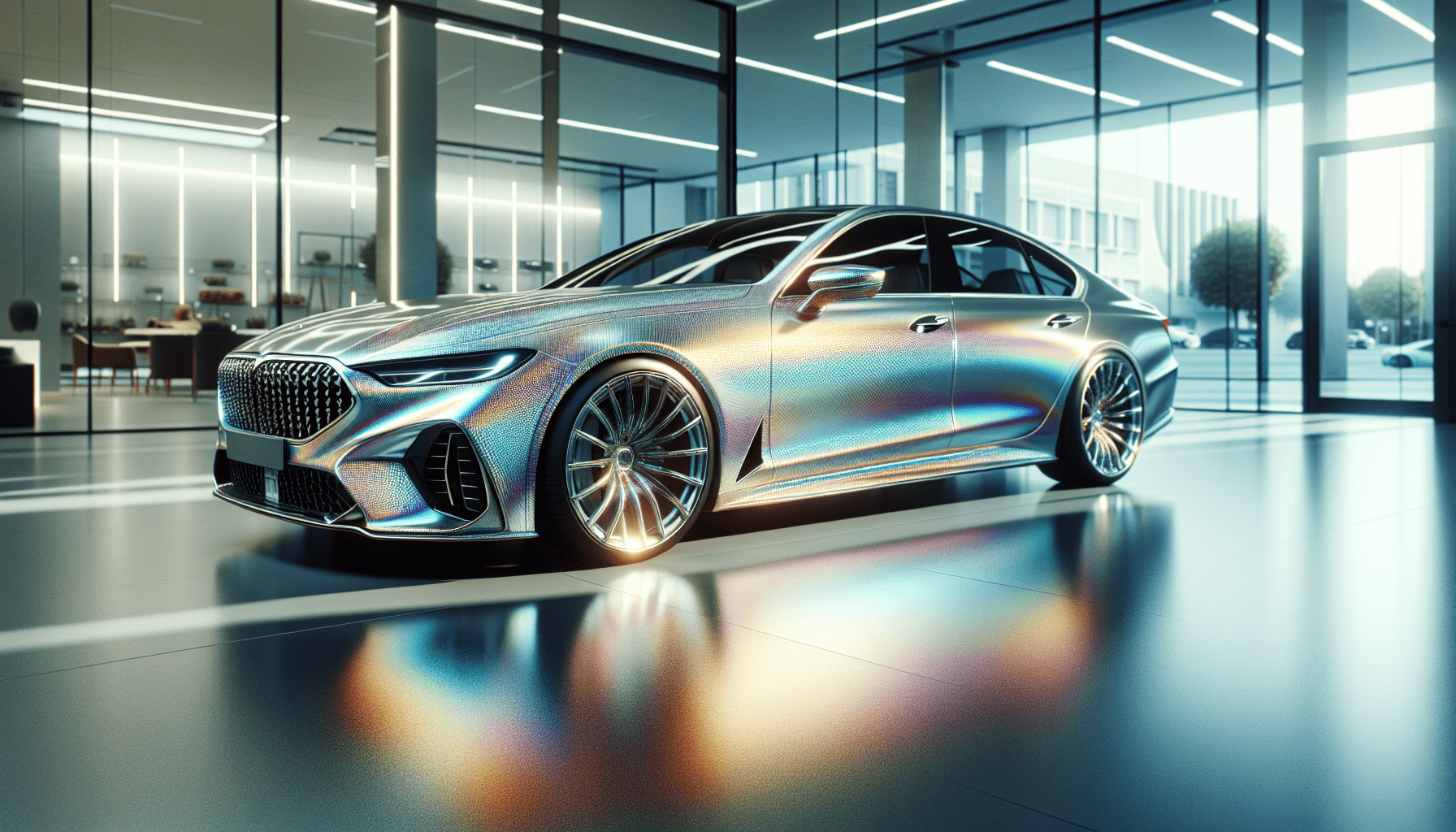Have you ever admired a vehicle that seems to change color depending on how the light hits it? This fascinating effect often results from pearlescent paint, a finish that adds depth and complexity to surfaces. Whether you’re an automotive enthusiast considering a custom paint job or simply someone intrigued by sophisticated paint technologies, understanding how pearlescent paint works can enhance your appreciation for this visually striking option.

Introduction to Pearlescent Paint
Pearlescent paint, also known as pearl paint or mica paint, is a type of finish used primarily in the automotive industry but applicable on a variety of surfaces. This paint offers an iridescent effect, making the surface appear as though it changes colors when viewed from different angles. Unlike metallic paint, which relies on metal flakes to create sparkle, pearlescent paint uses special pigments to achieve its unique look.
Fundamental Elements and Composition
Mica Particles
The core component of pearlescent paint is mica. Mica is a naturally occurring mineral that consists of thin, plate-like crystals. When ground to fine particles, these crystals can reflect and refract light, contributing to the paint’s shimmering effect.
Transparent Pigments
Transparent pigments are added to the paint mixture to enhance the depth and richness of the color. These pigments allow light to pass through, reach the mica particles, and then reflect back out, amplifying the iridescent quality.
Binder and Solvents
A binder is used to ensure that the paint adheres to the surface properly, while solvents adjust the paint’s viscosity for easier application. The binder often comprises a clear or lightly tinted polymer that aids in creating a smooth finish.
Optical Properties
Light Reflection
When light hits the pearlescent paint surface, it interacts with the mica particles. These particles reflect the light at various angles, producing a range of colors as a result of this multi-angle reflection.
Light Refraction
Refraction occurs when light passes through the mica particles, bending and splitting it into various wavelengths. This process contributes to the iridescent effect, making the paint appear to change color.
Interference
Some pearlescent paints include specially engineered pigments that create constructive and destructive interference patterns. These patterns further enhance the depth and complexity of the paint’s appearance.
Manufacturing Process
Grinding and Sizing Mica
The first step in manufacturing pearlescent paint involves grinding the mica into fine particles. These particles are carefully sized to ensure uniformity, which is essential for consistent light reflection and refraction.
Pigment Integration
The transparent pigments are then integrated into the mixture. Precision is crucial at this stage to ensure the colors are balanced correctly and achieve the desired iridescent effect.
Mixing and Blending
The ground mica and pigments are mixed with the binders and solvents. The mixture is blended thoroughly to ensure an even distribution of all components.
Quality Control
Quality control measures are implemented to test the paint’s optical properties, viscosity, and adhesion. This ensures the paint will perform as expected when applied.

Application Techniques
Surface Preparation
Proper surface preparation is critical for achieving the best results with pearlescent paint. The surface must be clean, dry, and free of contaminants. Sanding may be required to create an optimal texture for paint adhesion.
Primer Application
A primer coat is often applied to create a smooth, uniform base. This helps the pearlescent paint adhere better and enhances the overall finish.
Base Coat Application
The base coat sets the stage for the pearlescent effect. This layer is typically composed of pigments and binders without mica particles.
Pearlescent Coat Application
The pearlescent coat is applied over the base coat. Multiple layers may be required to achieve the desired depth and iridescence.
Clear Coat Application
A clear coat is applied as the final layer to protect the paint and enhance its shine. This layer also helps in bringing out the full iridescent effect.
Comparison with Other Types of Paint
Metallic Paint
| Feature | Pearlescent Paint | Metallic Paint |
|---|---|---|
| Pigments | Mica particles, transparent agents | Metal flakes |
| Light Interaction | Reflection, refraction, interference | Reflection |
| Visual Effect | Iridescent, color-changing | Shimmering, sparkling |
| Cost | Generally more expensive | Usually less expensive |
Solid Paint
Solid paint offers a uniform color without any special effects. It primarily consists of opaque pigments and lacks the depth and complexity found in pearlescent and metallic paints.
| Feature | Pearlescent Paint | Solid Paint |
|---|---|---|
| Pigments | Mica particles, transparent agents | Opaque pigments |
| Light Interaction | Reflection, refraction, interference | Minimal interaction |
| Visual Effect | Iridescent, color-changing | Uniform, flat |
| Cost | Generally more expensive | Usually less expensive |
Advantages of Pearlescent Paint
Aesthetic Appeal
Pearlescent paint offers a unique and eye-catching finish that adds a touch of luxury and sophistication. Its ability to change color under different lighting conditions makes it particularly appealing.
Resale Value
Vehicles with pearlescent paint often have a higher resale value due to their superior aesthetic appeal and the premium nature of the finish.
Customization
Pearlescent paint allows for a high degree of customization. You can mix different mica particles and pigments to achieve a truly unique look.
Disadvantages of Pearlescent Paint
Cost
The complex manufacturing process and high-quality materials make pearlescent paint more expensive than solid or metallic paint options.
Application Complexity
Applying pearlescent paint requires a high level of skill and multiple layers to achieve the desired effect. This complexity can increase labor costs and time required for the application.
Durability
While the clear coat provides some level of protection, pearlescent paint can be more prone to chipping and scratching compared to other types of paint.
Maintenance and Care
Regular Cleaning
Regular cleaning is essential to maintain the appearance of pearlescent paint. Use a gentle, non-abrasive cleaner to avoid scratching the surface.
Waxing
Waxing can help protect the clear coat and enhance the paint’s shine. Opt for a high-quality automotive wax for the best results.
Touch-Up Kits
Given the complexity and cost of pearlescent paint, having a touch-up kit on hand can be beneficial for minor repairs. These kits typically include the base coat, pearlescent coat, and clear coat.
Future Trends and Innovations
Improved Durability
Research is ongoing to enhance the durability of pearlescent paints. Advances in binder and clear coat technologies aim to provide better resistance to chipping and scratching.
Eco-Friendly Options
The demand for environmentally friendly products is driving innovations in pearlescent paint formulations. New, eco-friendly solvents and binders are being developed to minimize the environmental impact.
Expanded Applications
Beyond the automotive industry, pearlescent paints are being used in consumer electronics, home decor, and fashion. The versatility of these paints opens up new possibilities for creative design solutions.
Common Misconceptions
Pearlescent Paint is the Same as Metallic Paint
While both types of paint create a visually striking finish, the underlying technologies and effects are different. Metallic paint uses metal flakes to create sparkle, whereas pearlescent paint uses mica particles for an iridescent effect.
Pearlescent Paint Changes Color
Technically, pearlescent paint does not change color; it appears to change color due to the way light interacts with the mica particles. This interaction creates an optical illusion that can be perceived as a color shift.
Difficult to Repair
While more complex than repairing solid or metallic paints, pearlescent paint can be repaired effectively with the right tools and expertise. Touch-up kits and professional services can help maintain the paint’s appearance.
Conclusion
Understanding how pearlescent paint works enriches your appreciation for this sophisticated finish. From its core components like mica particles and transparent pigments to its complex application process, pearlescent paint offers a unique aesthetic that stands out. Whether considering its application for vehicles, electronics, or other surfaces, knowing its advantages and limitations can guide you in making informed decisions. The ongoing innovations promise even greater versatility and durability, making pearlescent paint a compelling choice for various applications.



